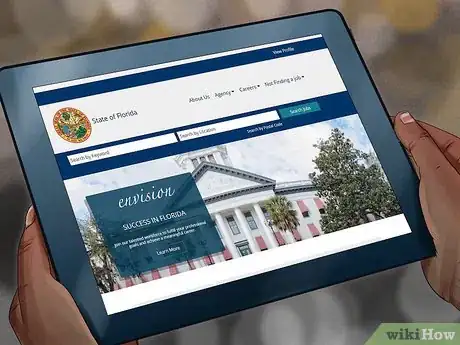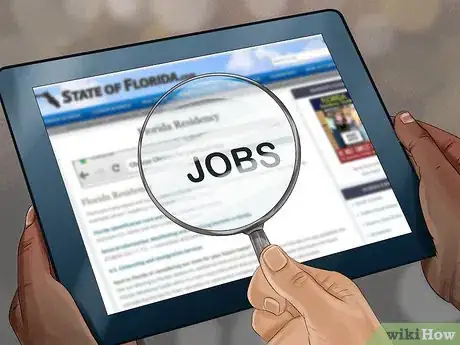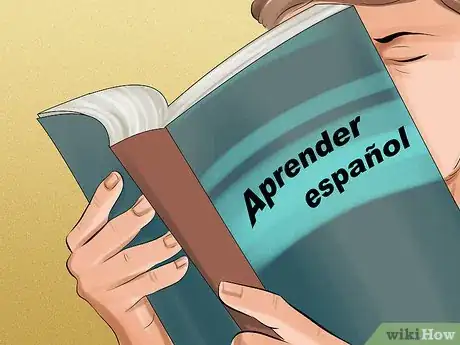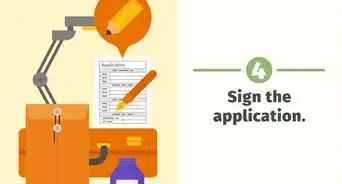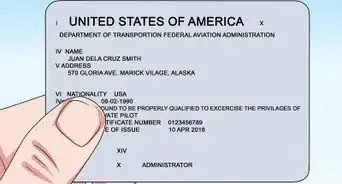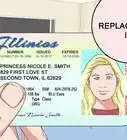This article was co-authored by wikiHow Staff. Our trained team of editors and researchers validate articles for accuracy and comprehensiveness. wikiHow's Content Management Team carefully monitors the work from our editorial staff to ensure that each article is backed by trusted research and meets our high quality standards.
wikiHow marks an article as reader-approved once it receives enough positive feedback. In this case, 90% of readers who voted found the article helpful, earning it our reader-approved status.
This article has been viewed 264,925 times.
Learn more...
Home to nearly 20 million residents, the state of Florida is a desirable place to live for several reasons. Its warm climate, excellent schools, numerous healthcare facilities, and endless recreational options lure a growing number of people each year, especially from the northern United States. If you’ve ever considered the possibility of moving to Florida or are in the process of doing so, you’ll need to selection a region of Florida to move to and a type of housing. Obtain legal residency and a driver’s license, and then acclimate yourself to the unique weather and culture of Florida.
Steps
Choosing a Location and Housing
-
1Decide which region of Florida you would like to live in. Aside from basic necessities which are present throughout most regions (e.g., area schools, jobs, hospitals), Florida is a huge and diverse state. If you don’t have your mind set on a specific city, then it helps to understand that there are five distinct regions of the state, one of which might be more attractive to you than the others.[1]
- The Florida Panhandle: This is home to the state capital of Tallahassee and is known for its beautiful Gulf Coast beaches. Since Tallahassee is only 30 miles (48 km) from the Georgia border, it is known for its Southern charm and friendly people.
- North Florida: This is home to the major cities of Gainesville and Jacksonville. It is known for its culturally Southern atmosphere and historic landmarks.
- Central Florida: This is home to Disney World, SeaWorld, and the Kennedy Space Center. Aside from the major tourist attractions, there are dozens of quaint small towns dotted with lakes in the region worth considering.
- South Florida: This is the largest metropolitan area of the state and is home to the Everglades, Miami, Fort Lauderdale, West Palm Beach, and Key West.
- Southwest Florida: This is home to Tampa, St. Petersburg, Naples, Sarasota and Ft. Myers. It is known for its museums, arts and theater, as well as its beautiful beaches.
-
2Decide what type of housing you’d prefer. People who move to Florida—especially if they’ve reached middle age—typically either purchase or rent a home. While renting a home may appear cheaper at first, purchasing a house will be a sounder financial decision if you’re planning to live there full-time for many years.[2]
- On the other hand, if you’re planning to have a Florida winter vacation home, it will be more worth your time and money to rent a house 4 or months out of the year.
Advertisement -
3Look into the cost of housing in an area you’d like to live in. Due to its appeal to retirees and snowbirds, Florida real estate can be pricey. Before moving, do a little online research and find which area of Florida you’ll be able to afford a house in. For example, the median home price in Miami is over $300,000 USD, while the median home price in the Panhandle is under $140,000 USD.[3]
- In addition to knowing average housing costs, it will benefit you to figure out a reasonable housing budget.
-
4Find a house in the area you’d like to live. Once you’ve chosen a location to live, you’ll need to find a specific house to live in. Reach out to a real estate agency based in the city or county you’d like to live in. Explain that you’re moving from out of state, and ask a real estate agent to find some houses that fit your budget.
- Once you’re discussing specific houses, the real estate agent should inform you whether the houses are in a flood zone or hurricane zone.
- You can also browse online real estate listings to see specific homes that are for sale (or will be at the time when you’re moving). For example, check out the Zillow listings at: https://www.zillow.com/fl/.
Finding Work
-
1Look into jobs in common fields of employment. Unless you already have a job waiting for you in Florida, you’ll need to put in some work to find a place of employment. A good place to start is by searching in some of Florida’s biggest industries. Some of the biggest types of employers in Florida include:[4]
- Tourism.
- Aviation and aerospace.
- The Walt Disney corporation.
- Health sciences.
- International trade.
-
2Work with a recruitment company to find a job that suits you. Job hunting from out of state is not an easy task. A Florida-based recruitment company can help you find a job in Florida while you’re still in another state. The job recruitment company will want to know your employment history and skill set, and will work to find a job in Florida that uses your professional strengths.[5]
- For example, visit the job recruitment company Career Xchange online: http://www.careerxchange.com/.
-
3Find a job working for the state of Florida. The state itself is always hiring in a variety of broad professional fields, including healthcare, legal work, management, and social services. Visit the state’s online job-search portal at: https://jobs.myflorida.com/.
- From the website, you can select from a variety of professional fields in which the state of Florida is currently hiring.
- After selecting a professional field, you can browse a listing of positions that are currently vacant.
Becoming a Florida Resident
-
1Visit the State of Florida's online portal for residency information. Taking care of the legal incidentals of moving to Florida is a crucial step. For more information on residency, visit http://www.stateofflorida.com/residency.aspx. Elements needed to declare Florida residency include: voter registration, in-state employment, a registered “declaration of domicile” in the county where you live, and proof of payment for utilities at your registered Florida address.[6]
- The State of Florida portal will also provide you with information regarding changing insurance coverage, change of address, and addressing business needs if you run a business.
-
2Obtain a Florida driver’s license. If you’re planning to drive in the state of Florida, you’ll need to have a state driver’s license. You can obtain the driver’s license at any Florida DMV office. When you arrive at the DMV, you’ll need show proof of insurance, proof of Florida residency, and the out-of-state vehicle title.
- Before visiting the DMV, also fill out the Driver’s License paperwork, online at: http://www.hsmv.state.fl.us/dmv/forms/btr/82040.pdf.
- You’ll also need to have your vehicle’s VIN number inspected by a law enforcement officer or a Florida DMV inspector.
- You have 30 days to obtain a Florida driver’s license from the date you first: accept Florida employment, register to vote in Florida, or enroll your kids in a public Florida school.[7]
-
3Register to vote in Florida. In order to become a Florida resident, you’ll need to register to vote in the state. You can change your voter registration online, at: https://registertovoteflorida.gov/en/Registration/Index. To register to vote in Florida, you must already live in the state.
- You can only register to vote after you’ve acquired a Florida driver’s license or other type of legal identification. You will also need to know the last 4 numbers of your SSN.
-
4Register your vehicle in the county where you’ll live. To register a vehicle, stop by a Florida Department of Highway Safety and Motor Vehicles (DHSMV) office. Bring a copy of your car insurance card, proof of ID, and a title for the vehicle.[8] The vehicle will need to be inspected while at the DHSMV office, and you’ll be asked to pay a $25 registration fee.
- You cannot register your vehicle in advance. You’ll need to wait until you’ve moved to Florida to register a vehicle.
Adjusting to the Weather
-
1Prepare for the hot and humid weather. When moving to Florida, be ready to experience long days of hot, humid, muggy conditions throughout the summer.[9] Cities along the coast can have a slightly cooling ocean breeze, but inland communities (especially in Central Florida) often face stifling, stagnant heat.
- Summer storms, brief and often heavy, occur with such regularity you can almost set your watch to them.
- The rest of the year is typically dry and mild in most of the state, with the occasional cold spell during the winter.
-
2Plan ahead to ready your home for hurricane safety. Begin by buying new hurricane shutters or having existing hurricane shutters inspected. Reinforce your roof and install hurricane glass. Get used to regularly stocking and re-stocking supplies such as non-perishable food, water, battery radios, etc.[10]
- Find out if your home is in a flood zone as soon as possible, preferably before settling the house.
- Also find out if your home is in a mandatory hurricane evacuation zone. Familiarize yourself with mandatory evacuation procedures
- Apartments and condominiums will usually take care of hurricane preparation for you, but you are on your own in a house.
-
3Take precautionary measures for your skin. If your skin is very sensitive to the sun, you’ll need to take extra care of it using lotions, creams, or other products as the Florida sun is very strong. Plan to wear high-SPF sunblock whenever you leave home in the summer, and wear a hat when you’re outside for more than 2 or 3 hours.[11]
- The humidity also makes Florida very comfortable for mosquitoes, so if you’re sensitive to bug bites, find and use a suitable spray or lotion that will keep them away.
Exploring Florida’s Lifestyle
-
1Visit Florida’s many amusement parks and attractions. Central Florida boasts a dense concentration of theme parks. A little online research will reveal there’s much more to experience than just Disney World! You can also visit the Cape Canaveral Air Force Station, Universal Studios, or watch a race at Daytona International Speedway.[12] Visiting these attractions is a normal part of monthly life for most Florida residents.
- For example, check out the Kennedy Space Center. About an hour from Orlando, the complex features a sprawling visitor center, rocket launch pad tours, and exotic wildlife viewing opportunities.
-
2Be patient on the road. With a high volume of tourists and senior citizens on the road, it can be easy to get frustrated behind the wheel, confronted by slow drivers or motorists who appear to be lost. Stay calm, follow the signs and learn to be content with it.
- Florida is a big state with plenty to see, and because of its flat geographical makeup, it’s a great place to explore by car.
-
3Learn to speak Spanish. This is especially important if you plan to move to South Florida, with its population of Latino residents and influence of Latin American culture increasing.
- You’ll feel more at home being able to use Spanish as well as English—there will be plenty of opportunities to learn Spanish when you’re living there.
-
4Familiarize yourself with Florida’s leisure activities. For example, spend a day at a beach. Florida has one of the longest contiguous coastlines of any state, with plenty to offer from sunbathing on the warm white sands to an array of water sports.[13]
- Take an air-boat ride through the Everglades. An unforgettable day trip, make sure to pick a day with comfortable weather (it can get very humid on the marshes).
- Visit the Florida Keys. Key West is the most famous of these many beautiful islands, and you can pose for a picture at the marker that states you’re a mere 90 miles (140 km) to Cuba.
Community Q&A
-
QuestionHow do I become a resident of Florida?
 Community AnswerMove to Florida, buy or rent a property, and move your belongings in. Find employment if needed, so that you can remain there. Apply for state residency. Note that you may have to live there for a certain period of time before you can be considered a resident.
Community AnswerMove to Florida, buy or rent a property, and move your belongings in. Find employment if needed, so that you can remain there. Apply for state residency. Note that you may have to live there for a certain period of time before you can be considered a resident. -
QuestionHow do I find an affordable place in Orlando?
 Community AnswerTry to find places away from the city center or the beach. You can either use online resources or drive around town and try to find signs indicating open rentals.
Community AnswerTry to find places away from the city center or the beach. You can either use online resources or drive around town and try to find signs indicating open rentals. -
QuestionWhat is the pay range for certified nursing assistants?
 Community AnswerA certified nursing assistant in Florida earns an average wage of $11.35 an hour.
Community AnswerA certified nursing assistant in Florida earns an average wage of $11.35 an hour.
References
- ↑ https://www.lifestorage.com/blog/moving/moving-to-florida/
- ↑ https://www.lifestorage.com/blog/moving/moving-to-florida/
- ↑ https://www.lifestorage.com/blog/moving/moving-to-florida/
- ↑ https://www.lifestorage.com/blog/moving/moving-to-florida/
- ↑ https://www.lifestorage.com/blog/moving/moving-to-florida/
- ↑ https://www.lifestorage.com/blog/moving/moving-to-florida/
- ↑ http://www.dmvflorida.org/moving-to-florida.shtml
- ↑ https://www.dmv.org/fl-florida/car-registration.php
- ↑ https://www.lifestorage.com/blog/moving/moving-to-florida/
About This Article
To move to Florida, start by deciding which region you’d like to live in, and if you’d prefer to rent or own a home. As you look for work, consider some of Florida’s biggest industries, including tourism, aviation, and The Walt Disney corporation. As you finalize your plans, visit the State of Florida’s online portal to learn how to change your address, take care of any business needs, and change your health insurance. Finally, if you are eighteen or older, go online to change your voter registration to your new home state! To learn how to get your Florida driver’s license, keep reading!






